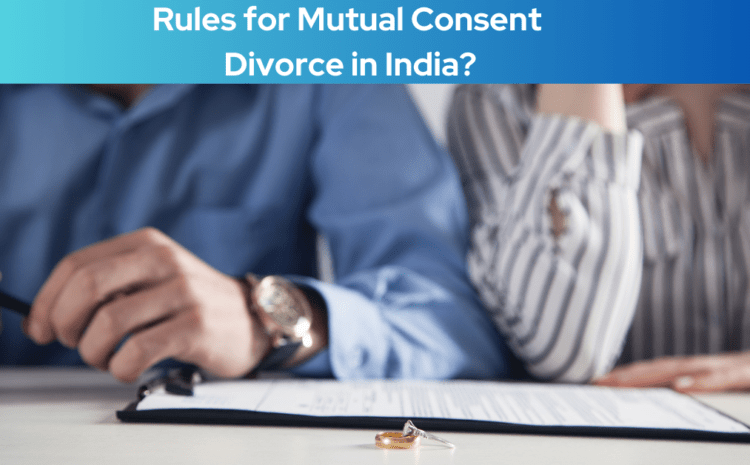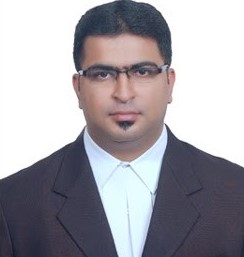
Mutual consent divorce is a regulatory process for the dissolution of marriage where the court observes and confirms that the consent of both parties is without any coercion, fraud, undue influence or force. The Apex Court has given a precedent for mutual consent divorce by allowing the court’s discretionary powers to forgo the statutory requirement of a cooling period of six months between the first motion and second motion in Amardeep Singh v Harveen Kaur AIR 2017 Supreme Court 4417.
- A report in Gitnux states that “There has been a 350% increase in divorce rates in India over the last two decades.”
- According to the Times of India statistics, “The number of mutual divorce cases filed in 2021 was 787 in the Family court, which was highest in the five years till 2021.”
The introduction of laissez-faire principles turned Hindu marriages into a civil contract. This allowed individuals to enter into marriage with their free consent and dissolve it with mutual consent. This has helped countless couples unable to live together as husband and wife break their matrimonial bond in an amicable way.
Indian Laws and Rules for Mutual Consent Divorce in India
In India, different personal laws govern marriage and its dissolution.
Mutual divorce or divorce by mutual consent in India is the term used when the legally wedded husband and wife mutually agree to dissolve their marriage. In such a case, they must jointly present a mutual divorce petition before the honourable court.
Dissolution through mutual consent is governed by the Marriage Law (Amendment) Act, 1976, for Hindus and Parsis and the Divorce (Amendment) Act, 2001, for Christians. This provision existed in the Special Marriage Act of 1954.
Divorce by mutual consent in India is recognised under section 13B of the Hindu Marriage Act, 1955, section 28 of the Special Marriage Act, 1954, section 32B of the Parsi Marriage and Divorce Act, 1988, section 10A of the Indian Divorce Act, and Muslim personal law.
Muslim laws recognise divorce by mutual consent in khula and Mubarak.” Khual” means ending the husband’s right over his wife in exchange for something through an agreement, and “mubbarat” means consensual divorce.
Also Read: – Mutual Divorce Process in Bangalore
Requirements for Mutual Divorce Consent Divorce in India
The Hindu Marriage Act of 1955 and the Special Marriage Act of 1954 need a
petition for divorce by mutual consent in India signed by both parties to be presented to the district court after a minimum of one year of solemnization of marriage. Irretrievable breakdown of marriage or incompatibility between the spouses can be the reason for mutual consent without any fault shown on either of the parties.
The basic requirements for the presentation of a petition by mutual consent are:
i. A valid marriage exists under the applicable law.
ii The husband and wife have lived apart for one year or more.
iii. Parties to dissolution are not able to live together.
vii. The parties have mutually agreed to dissolve the marriage.
This is the case even when both parties have been living separately, unable to live together, and have mutually agreed that the marriage should be dissolved. The agreement to dissolve the marriage and the agreement on sharing assets & liabilities, payment of maintenance & alimony, child support, custody & visitation rights and other interdependable responsibilities are required before approaching the court.
This is done to ensure that the decision is not superficial and impulsive. The parties were provided with 6-18 months to reflect on their decision to dissolve the marriage.
Landmark Judgments
Waiver of waiting period in mutual Divorce
Certain landmark decisions by the Supreme Court have been regarding waiting periods for mutual divorces. The Supreme Court says it can grant Divorce using special powers, and the 6-month waiting period can be waived. The Supreme Court held that it could dissolve marriages on the ground of “irretrievable breakdown of marriage,” invoking special powers under Article 142.
Punitive Action for Misuse of Laws
In some cases, there might be a possibility of misusing the mutual divorce laws. In such a case, the Madhya Pradesh High Court has imposed Rs 1 Lakh cost on a litigant wife for misusing the process of court by continuing prosecution against the husband and his family even after reaching a settlement and obtaining a decree of Divorce by mutual consent.
Mutual Divorce within one year of Marriage
In one case, the Karnataka High Court waived the one-year cooling-off period specified under section 28 of the Special Marriage Act, 1954. The court granted relief to the couple who wanted to part ways by mutual consent to concentrate on their careers.
Mutual Divorce without Form is required under Section 13B
In another landmark case, the Delhi court granted mutual Divorce in a contested case. In the ruling, the Court under Section 10 of the Family Court, which is a Special Legislation, did away with the form required under Section 13B of the Hindu Marriage Act for dissolution of Marriage, as the parties were living separately for more than a year, were not able to live together, were not willing to live together. There was consent in the form of separate prayers for the dissolution of their Marriage (albeit for the fault of others).
The laws governing divorces and mutual divorces have been laid down, keeping in mind specific mandatory requirements to ensure that the Marriage doesn’t end due to frivolous reasons and impulses from the parties involved. The Indian rules and laws governing mutual divorces are made to ensure that the right decision is delivered for the welfare of the parties involved. Times are changing, and so are the perspectives. The landmark judgements have shown a shift in attitudes. However, the role of an expert mutual divorce lawyer remains crucial. With an experienced legal expert’s aid, you stay strong with your appeal in the court of law.

Advocate Kiran S R – A highly skilled, passionate, dedicated advocate, with vast wealth of knowledge, professionalism, ethical approach and expert skills. One of the sharpest legal mindset brings the best principles of legal practice to the forefront. A qualified Engineer turned Advocate. His passion, dedication and vision to help and assist his clients achieve the best results is his driving force.

